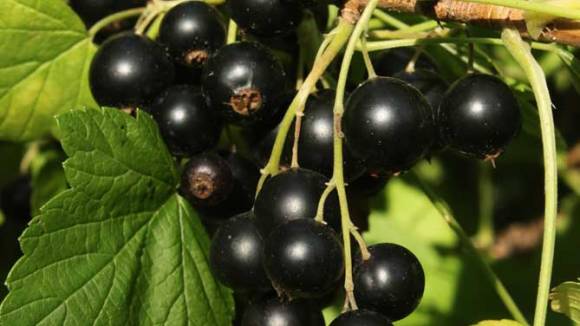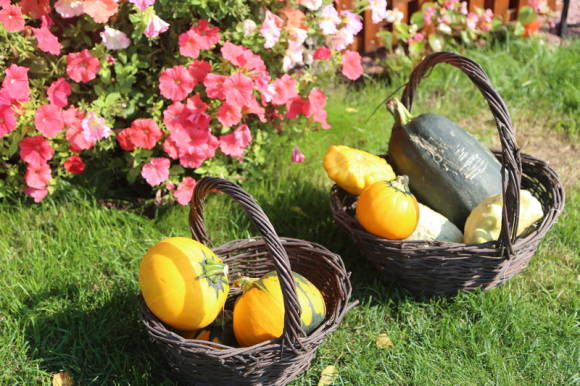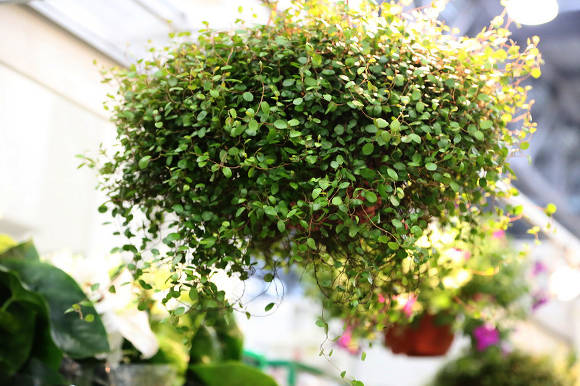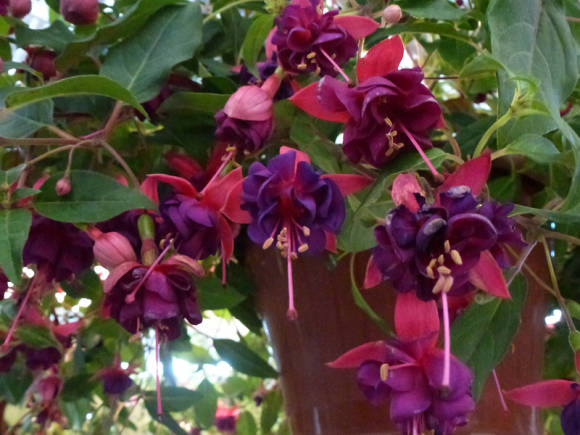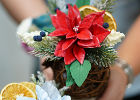Endive (Cichorium endivia) - a salad plant with a decorative rosette of leaves, with a delicate taste with bitterness. Endive belongs to the group of cyclic salads.
In the Roman Empire, similar forms of lettuce were widely grown, mainly for medicinal purposes. He is often mentioned in herbalists of the Renaissance. It was widely cultivated in old Russia, but the bitter taste of leaves and the originality of agricultural technology gradually weakened interest in it.
Now this beautiful plant is very rare in vegetable gardens, although it is very promising to grow it in the area of large cities. Endive is interesting in that it supplies the table with excellent salad greens in the autumn-winter period, when the stock of ordinary green vegetables is running out.

Endive on the counter
There are two main types - curly endive (Cichorium endivia var. crispum) and broadleaf endive (Cichorium endivia var. latifolia)... When buying a curly endive, it is important that the leaves are bright, undamaged, free of dark spots and slimy areas. The edges of the leaves should not be brown.
For broadleaf endives, the requirements are the same, the leaves themselves must be even, without dents. The presence of dents indicates staleness of the salad. It is recommended to store endive in a dark place; in the light, its leaves become very bitter.
The salad absorbs odors very well, so it should not be placed next to odorous foods and vegetables. When shopping for a salad, opt for an endive with bright and crispy leaves. It is not recommended to buy a salad with discolored and tough leaves.
Endive in the garden
The most important biological feature of endive is the rapid formation of a large rosette of leaves. In a short time, a powerful outlet with a mass of 300–400 g and more develops. The color of the leaves, depending on the variety, varies from yellowish green to dark green. The root of the plant is small, woody, branched.
With the onset of long days and elevated temperatures, the plants quickly develop erect and branched flower shoots with inflorescences consisting of numerous small lilac flowers.
Surprisingly, this southern plant has exceptional cold resistance. At an early age, it tolerates frosts down to -4 ...- 6 ° C, which is very important when used directly from the garden in late autumn. In fact, it can be taken from the garden until the snow cover.
Seed germination begins at +2 ... + 3 ° С, the optimum temperature is +20 ... + 22 ° С. Endive is moisture-loving, reacts negatively to dry soil; it is a long-day plant.
Useful properties of endive
It is very interesting that endive is closely related to ... dandelion, and their chemical composition is very similar. Endive is one of the richest foods in carotene of all green vegetables. It is also beneficial for its vitamin C, calcium, chlorine, iron, phosphorus, potassium, sulfur content.
Endive contains a ton of B vitamins: folic acid, pantothenic acid (vitamin B5), pyridoxine (vitamin B6), thiamine (vitamin B1) and niacin (B3). These vitamins are extremely beneficial for the nervous system. They are also involved in many important metabolic processes.
Inulin in the composition of lettuce promotes the regulation of substances in the human body. The use of lettuce has a beneficial effect on the functioning of the liver, cardiovascular system. Its leaves also contain the glucoside intibin, which has a beneficial effect on the nervous system and blood circulation, increases appetite and due to which they have a bitter taste. It helps to lower blood glucose and cholesterol levels in diabetics and obese patients.
Curly endive contains nutrients that are needed for the optical system of the eyes.If you consume endive juice mixed with juice of carrots, parsley and celery, you can restore some visual defects. The juice also supplies the muscular system of the eyes. Drinking the juice for several weeks will help restore vision.
The subtleties of growing endive
Endive salad prefers quiet, sunny locations. It grows well on light soil with a high content of humus. The soil should be cultivated and have a neutral soil solution. Endive does not tolerate frost, therefore, its early spring plantings must be covered.

It is often cultivated after all vegetables, except for salads. The best predecessors for him are abundantly fertilized cucumbers, zucchini, early white cabbage and cauliflower.
The preparation of the soil for the endive begins in the fall, digging a shovel to the depth of the bayonet, adding half a bucket of rotted compost to 1 square meter, 1 tbsp each. spoon of superphosphate and potash fertilizers, 1 tbsp. a spoonful of fluffy lime.
If the soil is very heavy, then additionally add 1–2 liter cans of sawdust treated with urea solution and river sand. In the spring, as soon as the soil allows, it is loosened again, adding 1 teaspoon of ammonium nitrate per 1 sq.m.
The endive is grown by seedlings and by sowing seeds in open ground. For growing seedlings, seeds are sown in late March – early April in boxes, hotbeds or plastic greenhouses. After the formation of two true leaves, the seedlings dive into pots 8x8 cm in size.
In open ground, seedlings are planted after the termination of spring frosts. A good seedling should have 4–6 well-developed leaves. It is planted according to the scheme 30x30 cm. Seedlings should be planted at the same depth at which they grew in the nursery, the core should be above the ground. After planting, the seedlings are watered abundantly.
Some endive lovers plant seedlings according to a thickened 20x20 cm pattern. This planting allows you to get more compact rosettes and leads to partial bleaching of the inner leaves.
Although the endive is very cold-resistant, however, during the seedling period, leaf damage is observed at a temperature of -2 ° C, and prolonged exposure to cold causes premature stemming of plants. Therefore, it is better to plant seedlings in open ground at the end of the frost. And when sowing seeds in open ground, sowing is carried out directly on the ridges in May – June, followed by thinning of plants in the phase of 1–2 leaves.
Further agrotechnics for growing endives coincides with the agrotechnics of all salads. Endive roots are close to the surface, so the topsoil should be moist and loose.
During the period of rapid growth of plants, they must be watered at the rate of 1.5 buckets of water per 1 sq. m beds. The soil is loosened after each watering and rain to ensure good aeration and to prevent soil crust formation.
Whitening is the most important procedure
When the rosette of leaves becomes large enough and spreading, you should start bleaching the leaves. Whitening improves the taste of cyclic salads. This is the most important operation in endive cultivation. Usually, bleaching is carried out after 2–2.5 months from the day the seedlings are planted to a permanent place, when the leaves reach their maximum size. Due to bleaching, the inner leaves of the endive become yellow-green and brittle, acquire a delicate taste with a minimum amount of bitter substances. To do this, the leaves are tied at the top of the rosette with a cord so that light does not penetrate the inner leaves. For this operation, choose a dry, sunny weather. At the same time, it is important that no dew or rain drops remain on the inner leaves, because this can cause leaf rot and crop loss.

In the summer, the bunches are kept in the dark for 3 weeks, in the fall - up to 5 weeks, until they grow white-yellow leaves in the center, collected in a dense head of cabbage. At this time, the plants must be protected from moisture on the leaves.
You can also cover the endive bed with a black film stretched over the frame or darken the plants with tightly knit boxes. Such a shelter not only allows the endive to be whitened, but also protects from the rain.
You do not need to bleach the endive, in this case you will grow a beautiful spreading rosette of green feathery leaves, which are perfect for preparing various dishes, but the bleached leaves are much softer.
Bleached sockets are poorly stored, so it is advisable to bleach not all plants at once, but only as needed.
Harvesting and storage of endive
Endive obtained from spring sowing is harvested in the middle of summer. Late endive can be dug up with roots with a lump of earth and transferred to wet sand in a cellar or greenhouse, sprinkled with wet soil. In the basement, the plants will gradually bleach themselves and remain fresh until the beginning of winter.
In the open field, endive is cultivated until the first frost. By building a film shelter over the garden bed, you will extend the garden life of the endive for a month.
"Ural gardener" No. 33 - 2016
